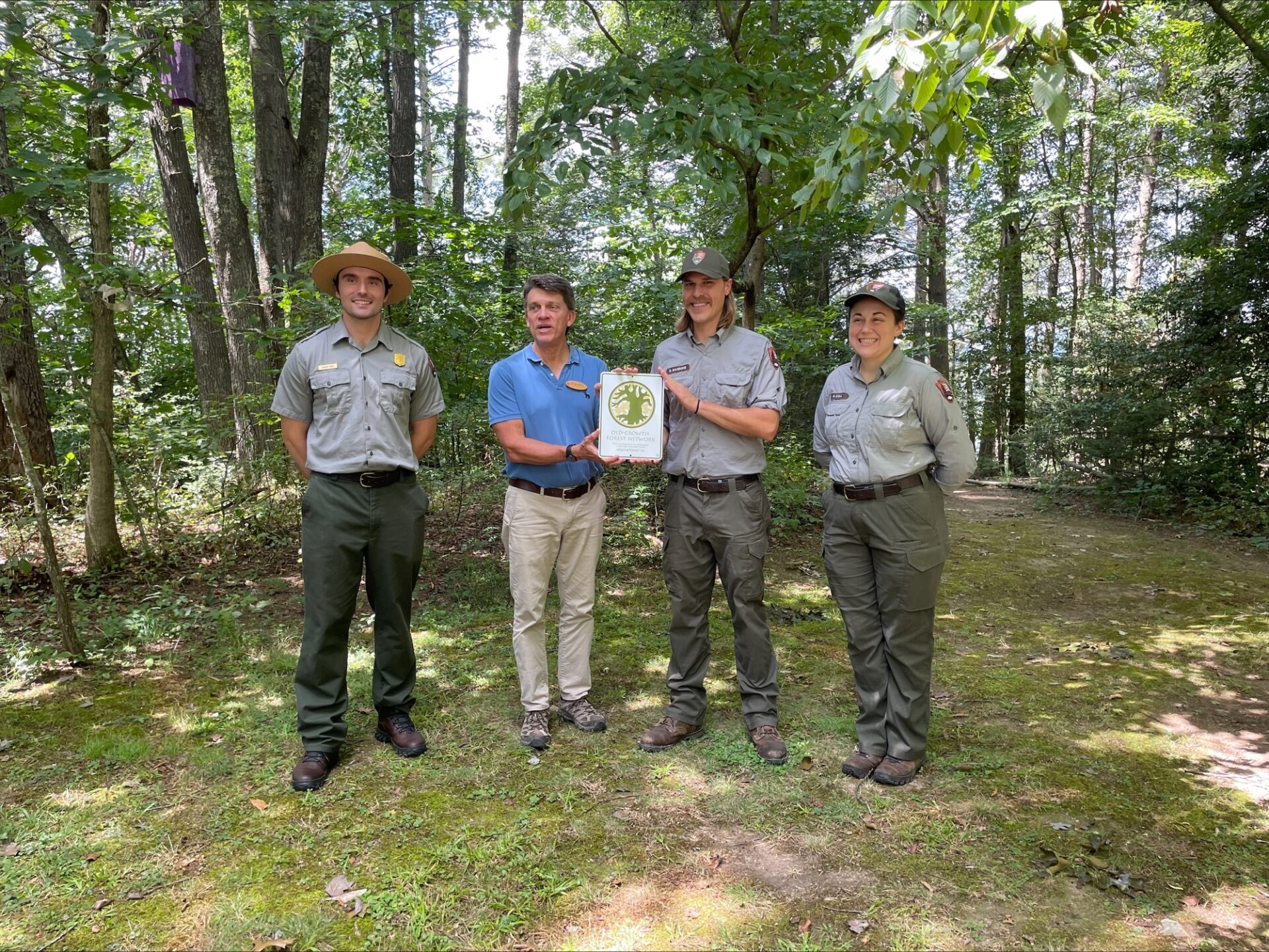Less than one percent of the forests in West Virginia are considered to be old-growth-forest. Most of the state has been timbered due to large scale commercial logging.
However, nestled in the New River Gorge National Park and Preserve, there is a patch of forest along the Burnwood Trail that is hundreds of years old. It was recently inducted into the Old Growth Forest Network.
The trees tell the stories of what once was; what the weather was like, precipitation, what the soil composition was, what kinds of animals lived and died in that area. They can even show how indigenous communities modified the lands around them.
Chance Raso is a Park Ranger and a dendrochronologist, or someone with advanced knowledge of the science or techniques of dating events and environmental change by using the characteristic patterns of annual growth rings in timber and tree trunks.
“Old growth forests are like living museums, because there’s only a few spots of them left remaining here in Appalachia and [They are] a great way to have people come out and see what the original forests looked like,” Rasso said.
He said in these ecosystems visitors see larger trees. Their twisting branches reach out wide and high in the canopy. Their gnarled and twisted trunks are not tapered upward like younger trees. It’s usually 10-15 degrees cooler in the shady groves around these trees with specs of piercing light checkering the leafy forest floor.
Doug Manning is a park ranger and a biologist at the national park and says that while the old forest tells a lot about the past, it also clues in the park service about things they could do for a better future for our parks.
“It is really amazing to be able to touch something that we know started growing back in the 1600s,” he said. “But the important part, from my perspective, is having this forest that is connected as a reference for us to be able to better manage our public lands.”
Manning said the landscape around these trees and this forest have changed a lot since these trees were young saplings. New and invasive plants and animals are on the landscape, and other species have gone extinct.
“We have a lot of different pressures facing our forest,” he said.
Manning says these old forests that have stood the test of time are good at handling some of those pressures.
“Those ecosystems tend to be better adapted to preventing certain things like flooding downstream. Forests do a really good job of absorbing water,” Manning said.
Brian Kane works with the Old Growth Forest Network and worked with Rasso and Manning to get this patch of forest inducted into the program.
He said not only do these trees help prevent catastrophic weather events like flooding and landslides but trees absorb carbon from the air, they cool the area around them, and they stabilize the soil and sediment with their deep interconnected root systems.
“They also are habitat for rare and endangered species,” Kane said. “And they really do enhance communities by the opportunities they offer our people to walk through them and enjoy the natural beauty and the hard work they are doing regarding the environment.”
Kane said he believes these ecosystems are an essential factor in combating climate change.
Once a forest is part of the Old Growth Forest Network, it is protected from being timbered. Volunteers who believe they have located an old growth forest can contact the organization and send sketches or photos of the forest. Then the organization starts to look a bit deeper into it. However, with the Burnwood forest the process was different.
“In this case, Doug Manning with the Park Service and Dr. Tom Saladyga, associate professor of geology at Concord, had done research on this forest together, and they approached us about its qualities as an old growth forest and said, ‘This is a great candidate’,” Kane said. “So then usually it would be good to verify it. And because they are both scientists, they had excellent data. They had done a coring; they had done the studies with their students from Concord University. So, it came together beautifully because they submitted to us a very complete piece of research.”
Kane said in many states there are no protections to removing old-growth trees from public lands and about half of all old growth forests have very little, or no, protections and can still be cut down.
“So that’s why we get concerned,” he said. ”When people begin to realize what a forest has endured to grow to this point, and how they are bellwethers of time, and they tell us such great stories about the past — they would really think differently about it.”
President Joe Biden signed an executive order in 2022 protecting old growth forests. The order stated that “Old growth forests on federal lands are critical to the health, prosperity and resilience of our communities” and that they will play an irreplaceable role in reaching new zero greenhouse gas emissions.”
And while the Old Growth Forest Network is working to protect existing old growth forest, national park rangers like Manning are working to help facilitate new old growth forest
“One of the really amazing things about our public lands, especially in national parks, is that we have forests that are on a trajectory to be that,” he said. “Maybe not in my lifetime, but there are people who are going to get to see 350 plus year old trees — in due time.”
The newly designated old growth forest and the Burnwood Trail that loops though it is across Highway 19 from the ranger station at the bridge park.
Visit the group’s website to find out more about old growth forests around you, or how to volunteer with the Old Growth Forest Network.
